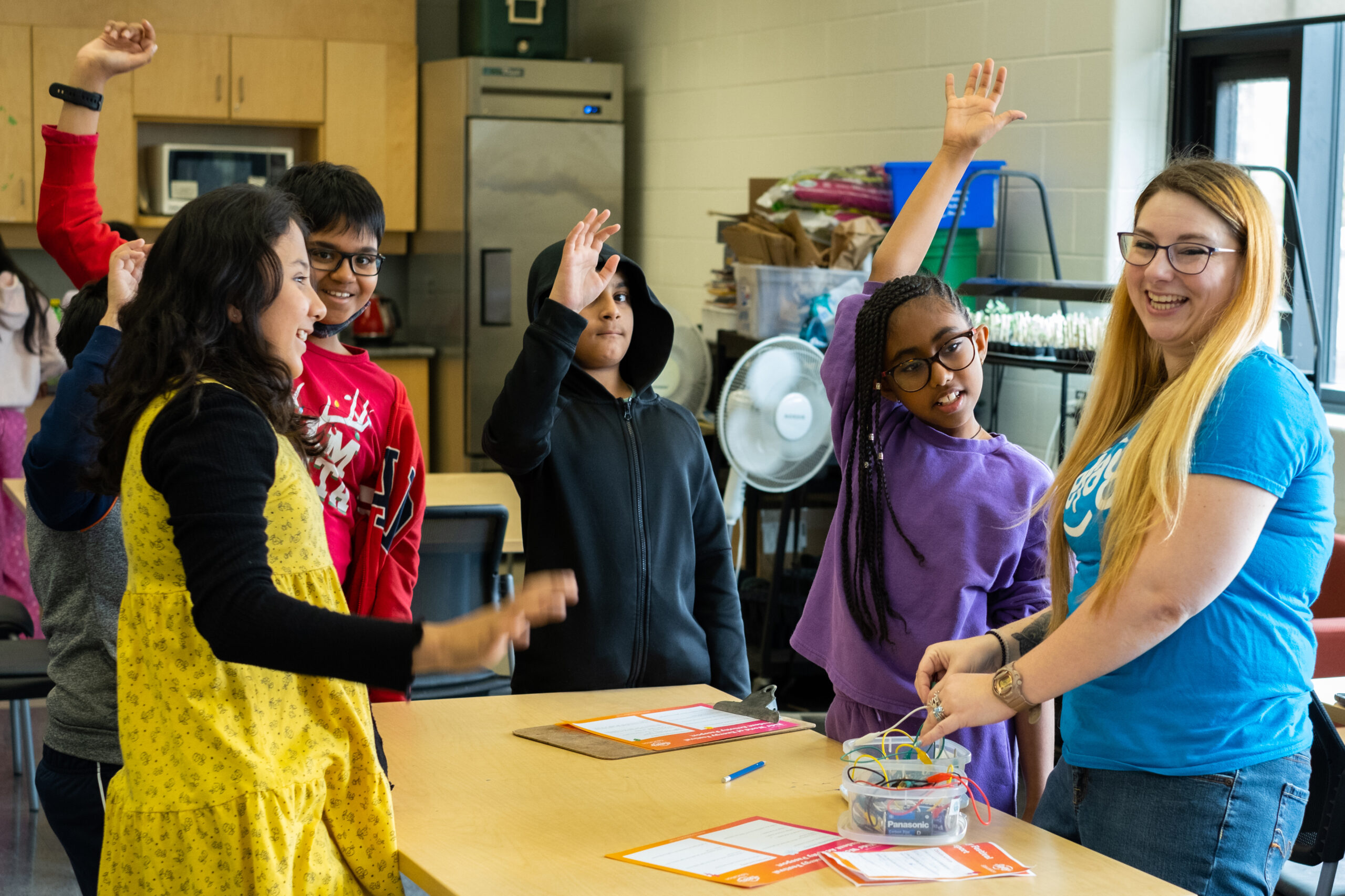
Written by: Allison Bradbeer, Program Coordinator, Ontario (Greater Toronto Area)
Why energy literacy matters
Energy touches nearly every part of our lives, from lighting homes to powering cars. But how well do we understand where it comes from and what it does? Energy literacy is essential. It helps people make smart choices, prepares students for jobs, and empowers communities as we shift to renewable energy.
We’ve depended on fossil fuels, coal, oil, and gas, for energy since the Industrial Revolution. These sources fueled growth but also caused climate change, air pollution, and environmental damage. Understanding energy is more important than ever to protect the environment and human health.
Energy literacy empowers informed decision making
On a global scale it’s important for young people to understand how energy resources and trends influence national policies, industries, and the economy. This prepares students to navigate and contribute to an energy landscape that is working towards eliminating the use of fossil fuels.
As future voters and decision-makers they will help them shape government policies, corporate sustainability, and energy finance. Energy literacy can also help people to hold fossil fuel and related industries accountable for their environmental harm and to mitigate climate change.
It’s also important to teach young people how they can reduce their energy consumption to promote conservation and help reduce bills at home.
The urgency of the renewable energy transition
The science is clear: fossil fuels are the primary driver of climate change. Burning coal, oil, and gas releases greenhouse gases that trap heat in the atmosphere, leading to rising temperatures, extreme weather events, and harm to ecosystems. Fossil fuels are by far the largest contributor to climate change, accounting for over 75 percent of global greenhouse gas emissions. And it contributes to air pollution which is linked to millions of premature deaths every year. We put ourselves and future generations at risk if we continue using fossil fuels.
The solution? A rapid shift to renewable energy sources like solar, wind, and responsible hydroelectric power. Unlike fossil fuels, renewable energy is abundant, sustainable, and does not contribute to climate change. Many countries are already making progress—installing solar panels on homes, expanding wind farms, and investing in battery storage to ensure a reliable energy supply. For this transition to succeed, people must understand its importance and their role. That’s where energy literacy comes in.
How to bring energy literacy into your classroom
Educators are key in preparing young people to shape the future of energy. Teaching energy literacy can be interactive, engaging, and relevant. Here are five ways to incorporate energy literacy into your classroom.
1. Connect energy to everyday life
Many students don’t think about where their electricity comes from until there’s a power outage. Help them see energy’s role in daily life:
- What powers their smartphones and gaming consoles?
- Where does the electricity in their homes come from?
- What happens when they plug something into an outlet?
Students become curious about how energy works when you can link the topic to things they care about.
2. Use hands-on experiments
Students learn about energy better when they see it in action. Try these hands-on activities:
- Create a solar oven to show how sunlight can cook food.
- Conduct an energy audit to assess energy use in a school or home.
Interactive learning helps students grasp concepts and makes lessons memorable.
3. Introduce the concept of energy justice
Not all communities access renewable energy equally. Many Indigenous, remote, and low-income areas still rely on costly, polluting diesel generators. Teaching about energy justice helps students see that the renewable transition is about fairness and access.
4. Involve play!
Active play or gamification of lessons can excite students about energy literacy. Try out:
- Power Down Challenge – Track classroom electricity use and compete to reduce it. (you can borrow watt meters from most public libraries)
- Renewable Energy Debate – Have students research and present arguments for different renewable sources.
- Energy Detective Mission – Assign students to find energy waste in the school and suggest fixes.
These activities encourage critical thinking about energy use and ways to make a difference.
5. Connect energy to real people’s jobs
Green careers are some of the highest in demand and fastest growing markets. Many students don’t know about the wide variety of job options that can help the planet. Introduce them to:
- Wind and solar technicians
- Renewable energy advocates and policy makers
- Environmental communicators and educators
- People working in sustainable farming
- Indigenous leaders and indigenous led organizations or businesses
Bringing in guests from renewable energy and other sustainability fields can show students real-life examples of their studies.
Final thoughts
Energy literacy is not just about understanding electricity; it also prepares young people to be informed citizens in the renewable energy transition. We can inspire the next generation to act and help create a future powered by renewable energy by making energy education engaging and hands-on.
Want help teaching about energy literacy?
Book a Relay Education workshop for your students, so the experts and hands-on learning comes to you.
Additional resources:
- Efficiency Canada – is a research institute that provides energy efficiency education materials and initiatives to encourage sustainable practices in schools.
- Natural Resources Canada (NRCan) – Shares free classroom resources on energy topics
- Clean Energy Canada – Publishes reports and articles on Canada’s transition to clean energy, useful for classroom discussions.
About Allison:
Allison is an Ontario Certified Teacher with 15 years of experience as an environmental educator in various non-profit organizations. She is currently a Program Coordinator for the Greater Toronto Region for Relay Education. Allison manages workshop scheduling and delivers classroom workshops. During the summer, she facilitates workshops in remote northern Indigenous communities and runs workshops for summer camps in Toronto. Allison additionally works as a Toronto District School Board Secondary Occasional Teacher, exclusively supporting Indigenous alternative schools in the city.

